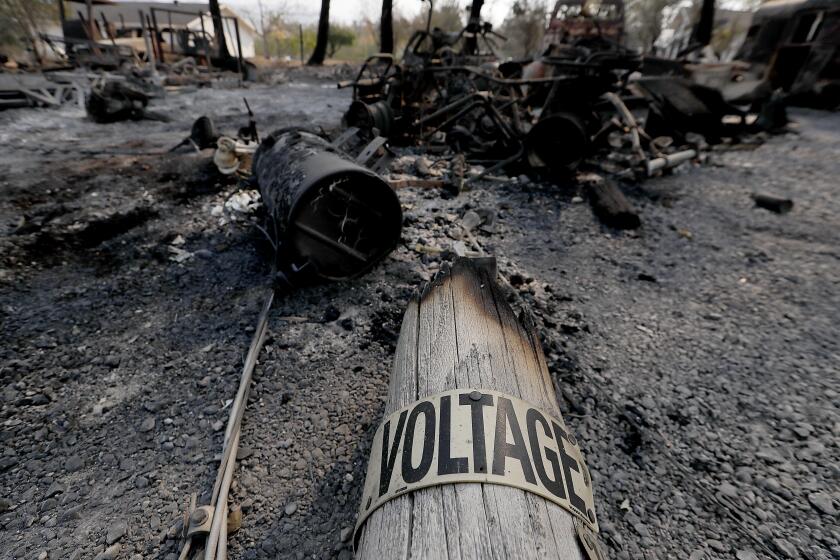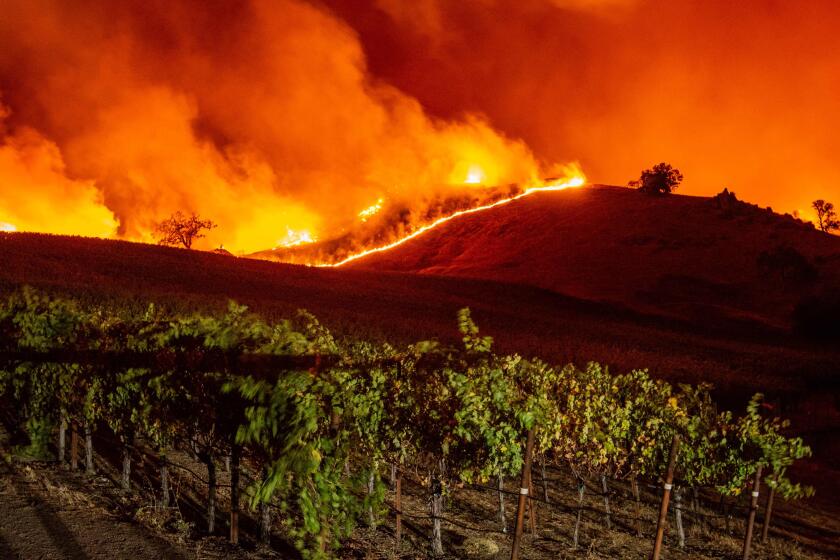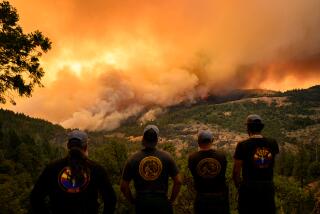A race against time to slow Sonoma fire before monster winds return
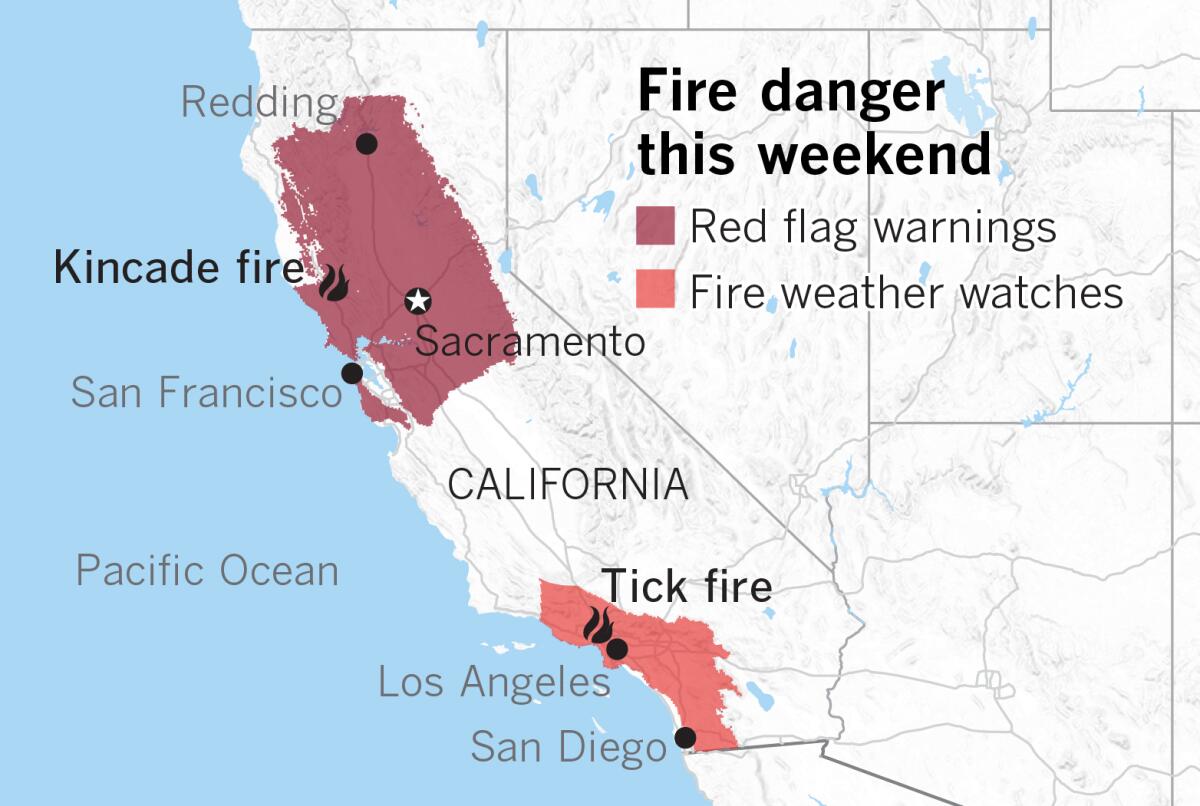
- Share via
HEALDBURG, Calif. — As firefighters here battled a fire dancing through the hills of Sonoma County wine country, they knew they were in a fight against time.
On Friday, the powerful winds that had fueled the fire slowed, offering time for crews to gain some ground. But by Saturday night, the conditions will turn grim and dangerous.
“I wouldn’t be surprised if we saw gusts between 80 and 85 mph,” National Weather Service meteorologist Drew Peterson said. “Hopefully, they can make some progress. We’ll most likely see the fire spreading once again.”
The Kincade fire has burned 21,900 acres in northern Sonoma County and was only 5% contained as of Friday afternoon. The entire town of Geyserville and vineyards in the region were ordered to evacuate, though some stayed, using generators for power. Fire officials said 49 structures, including 21 homes, were destroyed, and the Geysers geothermal facilities run by Calpine Corp. reported some damage.
Gov. Gavin Newsom said the state secured $75 million for areas affected by power shut-offs. Half would be allocated to local governments, with the cities of Los Angeles, San Jose, San Diego and Oakland receiving $500,000 each. The money can be used to purchase equipment for planned shut-offs, such as generators, fuel storage and other backup energy sources.
Fueled by violent winds from the northeast, fires erupted on dry hills across California, tearing through oaks and vineyards in Sonoma County and burning homes near Santa Clarita.
This week, the state provided additional resources to assist Pacific Gas & Electric Co. in investigating power lines and turning the power back on more quickly, including for aircraft and infrared technology, Newsom said.
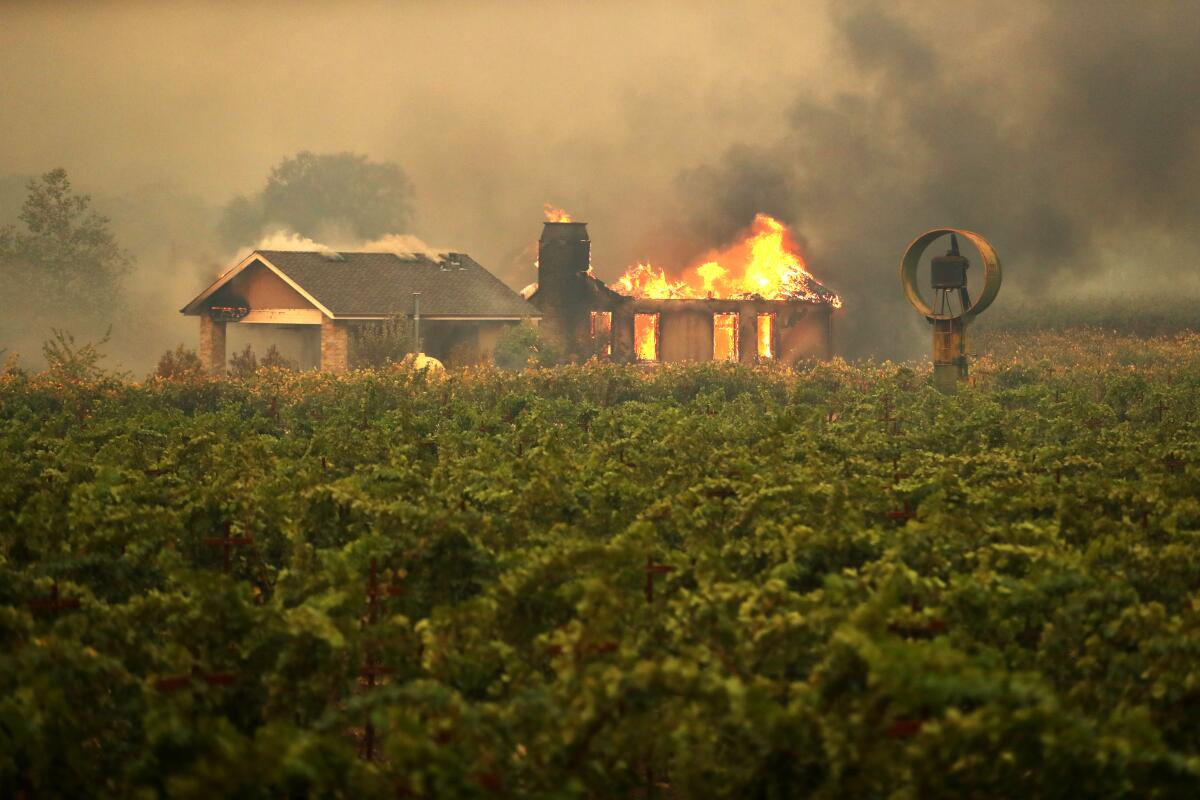
On Sunday, conditions are likely to worsen. The winds are expected to head down slope, reaching urban areas as far as Oakland, San Francisco and Sacramento. These winds are what brought devastation to rural communities in the foothills of the North Bay hills when fires struck in 2017. The Tubbs fire in Sonoma and Napa counties killed 22 people and destroyed more than 5,000 homes.
For deTraci Regula, the hardest part of the evacuation from Geyserville was getting the emu in the minivan.
Regula is the director and priestess at Isis Oasis, and animal sanctuary and legally recognized temple to the Egyptian goddess Isis, located in Geyserville, a wine country town of fewer than 1,000 people founded around natural hot springs, and currently threatened by the Kincade fire.
The 10-acre spiritual retreat is home to about 120 animals including ocelots, snakes, alpacas and two elderly emus named Zoe and Pavilion. Regula and about 15 volunteers had been prepping for an evacuation all night, warned by the sirens at the nearby fire station. They had to evacuate twice in 2017, mostly as a precaution to nearby fires. But this time felt different with the flames bearing down in the nearby hills.
Before dawn, pounding on her door let her know it was time to get out fast. Minutes later, the power cut off with no warning, Regula said, leaving them stumbling through animal enclosures trying to capture their menagerie by flashlight.
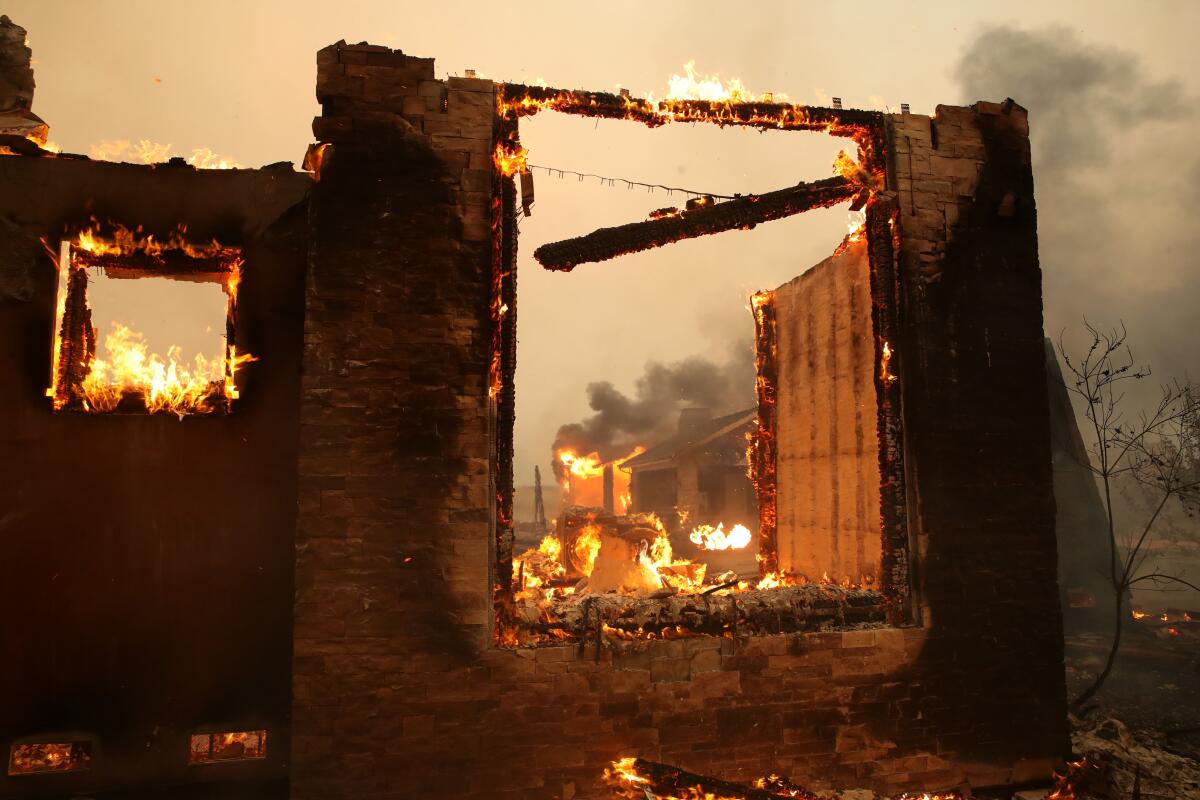
“We began bagging the birds,” she said. The nine cats, including three servals, spotted felines that look like small cheetahs, weren’t terribly hard to corral.
“They like the smaller spaces, so they actually in some cases crawled into the containers themselves,” she said.
The emus were a different story. About 5 feet tall, the birds have sharp beaks and talons, and a kick that can disembowel a coyote, she said.
To catch one, “you basically hug the emu, you try to keep the beak away from your face and stand where they can’t kick you,” Regula said.
Regula stumbled through their pen attempting to put socks over their heads, meant to calm them down and make them easier to handle.
“That’s the theory, anyway,” she said. “This time we did not find that was particularly helpful.”
But she managed, then had to maneuver one of the unhappy birds into the rear of a hatchback. She was “pushing the emu ahead of me and then managed to squirm back out,” she said. “That was interesting.”
If the emus were temperamental, the alpacas were having none of it. They simply couldn’t be caught, and Regula finally had to leave without them.
“They just would not let us capture them,” she said.
Kincade fire: PG&E shut off power again as winds returned, but to fewer customers. Questions about the utility and the Sonoma County blaze are addressed.
Hours later, she was able to return with a helpful U.S. Department of Agriculture agent whom she dubbed “the alpaca whisperer.” He managed to get his hands on the duo, who are now with the emus at the Sonoma Fairgrounds.
“We’re all doing OK, all things considered,” Regula said.
Willon and Luna reported from Sonoma County. Times staff writers Hannah Fry, Alex Wigglesworth and Colleen Shalby contributed to this report.
More to Read
Sign up for Essential California
The most important California stories and recommendations in your inbox every morning.
You may occasionally receive promotional content from the Los Angeles Times.
